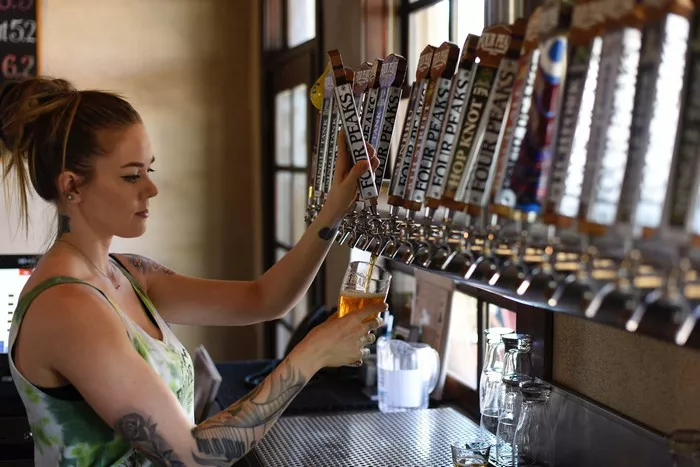The experience of savoring a cold, refreshing beer is a cherished pastime for many, but why is warm beer so gross to our senses? The temperature of a beer can significantly impact its taste, aroma, and overall appeal. Understanding the scientific reasons behind why warm beer is often deemed unpalatable can shed light on the intricate interplay between temperature and flavor perception.
Temperature’s Influence on Flavor Perception: A Sensory Perspective
The perception of taste is a complex fusion of sensory inputs, wherein temperature plays a crucial role. Warm beer, compared to its chilled counterpart, activates taste buds differently. When beer is warm, it tends to release more volatile compounds, heightening its aroma and taste. However, this heightened release of compounds isn’t always favorable, as it can amplify certain off-flavors, making the beer less pleasant.
Impact of Warm Temperature on Aromatics and Volatile Compounds
Beer contains various volatile compounds, including esters, aldehydes, and hop oils, contributing to its aroma and flavor profile. Elevated temperatures accelerate the release of these compounds, intensifying the beer’s aroma. However, when a beer is warm, it can magnify the presence of undesirable compounds, such as certain sulfur compounds or acetaldehyde, leading to unpleasant aromas akin to cooked vegetables or rotten eggs. This intensified release of off-putting aromatics contributes significantly to why warm beer is so gross to many individuals.
Texture and Mouthfeel Alteration in Warm Beer
Apart from aroma and taste, temperature influences the texture and mouthfeel of beer. Chilled beer tends to have a crisper, more refreshing feel due to carbonation and lower temperatures, which help numb the taste buds slightly, diminishing the perception of bitterness or off-flavors. Conversely, warm beer’s higher temperature accentuates the flavors and mouthfeel, potentially amplifying any undesirable sensations like excessive sweetness, harsh bitterness, or a watery texture, contributing to the aversion to warm beer.
Chemical Changes in Beer Due to Temperature Variations
Temperature fluctuations can induce chemical reactions in beer, leading to flavor degradation. Exposure to heat accelerates the oxidation process, causing beer to spoil more rapidly. This can result in a stale, cardboard-like taste, often associated with beers exposed to higher temperatures for extended periods. The degradation of hop compounds and the breakdown of delicate flavors and aromatics contribute significantly to why warm beer is so gross to discerning beer enthusiasts.
Psychological Impact and Cultural Norms Surrounding Beer Temperature
Beyond the scientific aspects, the perception of warm beer being unpleasant is also influenced by psychological factors and cultural norms. Many beer drinkers have been conditioned to associate cold temperatures with freshness and quality. Hence, the anticipation of a refreshing, chilled beer is deeply ingrained in consumer expectations. The contrast between this expectation and the reality of warm beer can significantly impact one’s perception of its taste and desirability.
The Role of Temperature in Serving Recommendations and Brewing Practices
Brewers and beer enthusiasts alike emphasize the significance of serving beer at the appropriate temperature to optimize its flavors. Different beer styles have recommended serving temperatures, as colder temperatures might mask certain flavors in complex brews like stouts or ales while enhancing crispness in lighter lagers or pilsners. Brewing practices also prioritize temperature control during fermentation and storage to maintain beer quality, underscoring the importance of temperature in the brewing process.
Mitigating the “Gross” Factor: Solutions for Enjoying Warm Beer
Despite the general aversion to warm beer, some measures can mitigate its perceived unpleasantness. Using appropriate glassware that helps maintain the beer’s temperature, such as insulated mugs or glasses, can slow down the rate at which the beer warms up. Additionally, embracing certain beer styles that are more forgiving at higher temperatures, such as Belgian ales or certain farmhouse ales, can provide a more enjoyable warm beer experience due to their complex flavor profiles.
Conclusion
The revulsion toward warm beer stems from a complex interplay of sensory perception, chemical reactions, cultural conditioning, and brewing science. Temperature significantly impacts the aroma, taste, texture, and overall quality of beer. The intensified release of undesirable compounds, alterations in mouthfeel, and chemical changes contribute to the perception that warm beer is gross to the palate. Understanding these factors can guide consumers in appreciating beer more mindfully while encouraging brewers to prioritize temperature control in the production and serving of their beverages.


